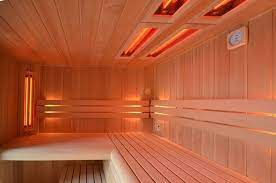Saunas have been utilized for wellness and relaxation for centuries. In a traditional sauna, you typically sit in a room heated up to extreme temperatures, often using a wood-burning stove to create heat and steam. traditional sauna are still popular today, and they offer numerous benefits for your health and well-being.
One essential element of a traditional sauna is the material the walls, benches, and other structural elements are made of. Each material has its unique benefits and differences, so choosing the right one is essential for your sauna experience. So, in this article, we will explore some of the traditional sauna materials and their benefits.
1) Cedar
Cedar is the most popular aromatic wood type used in saunas because of its properties in preventing rot and repelling insects. These properties, combined with the pleasant fragrance of cedar, make it an ideal choice for constructing sauna walls and benches. Cedar also has excellent insulation abilities, which make it easy to maintain heat in the sauna cabin.
2) Hemlock
Hemlock is another popular wood type used in sauna construction. Hemlock has great insulation abilities and doesn’t shrink or warp, making it an ideal choice for sauna cabins. Hemlock is also known for its anti-bacterial and anti-fungal properties, making it a great choice to maintain a clean and healthy environment in a sauna cabin.
3) Pine
Pine is popular both as a wall and bench material and is often used in traditional Finnish saunas. Pine is known for its aromatic properties that produce a mild smell, making it a great choice for those who don’t find the fragrance of cedar too strong. Pine is also moisture-resistant and has excellent insulation abilities, which makes it an ideal choice for sauna construction.
4) Aromo-treated wood
Aromatic wood has natural anti-bacterial and anti-fungal properties, making it an excellent choice for sauna benches and walls. Aromo-treated wood undergoes a special heat treatment process that seals the pores of the wood. This process creates a moisture-resistant surface that will prevent the growth of bacteria and fungi and prevent the wood from rotting.
5) Tile
Tile is a non-wood material that is a popular choice for sauna benches and floors. Tiles are easy to clean, durable, and heat-resistant, making them an ideal choice for areas that experience high temperatures and humidity.
Conclusion:
In conclusion, choosing the right materials for your sauna is important if you want a comfortable, effective, and healthy experience. Cedar, Hemlock, Pine, and Aromo-treated wood are popular wood types used in sauna construction due to their unique characteristics. When it comes to choosing the right material, consider your needs, preferences, and budget. With the right materials, you will ensure that your sauna experience is worth every penny!



